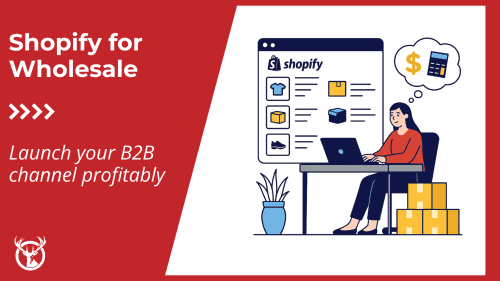The spread of the novel coronavirus forced many brick-and-mortar retailers to temporarily close their doors. Even before COVID-19, many brick-and-mortar stores were struggling. However, the pandemic exposed existing weaknesses in the retail business model and exacerbated them. To make up for lost business, many brick-and-mortar shops took their retail stores online. This is a smart move that every brick-and-mortar retailer should consider, with or without a pandemic.
Many brick-and-mortar sellers have scrambled to add eCommerce. For many, the revenue stream from online sales is the only thing that will keep their business afloat. However, getting started can be challenging.

If you’re already selling in a retail shop, you can take some of your knowledge and much of your customer base with you when you open a retail store online. However, there are a number of differences between eCommerce and brick-and-mortar retail. Your transition will be easier if you understand those differences ahead of time.
Here’s a primer on eCommerce to help you create a successful retail store online.
Why you should turn your brick-and-mortar retail store into an internet business
If you have a brick-and-mortar shop and you don’t also have a retail store online, take this moment as a wakeup call. There are many reasons why you should think of eCommerce as an important component of your overall business. Online retail can benefit you even during normal times.
- Ecommerce sales help your business survive disruptions. A global pandemic isn’t the only thing that can upend your retail store. Smoke from wildfires or an unusual cold spell might keep people from coming out to shop. Natural disasters can cut off travel or damage your building. An online retail store is your insurance against these and other disruptions.
- Give customers a better way to find you. If you are in a tourist destination, you probably get a lot of shoppers from out of town. Your online presence allows those customers to buy from you once they are back at home. In addition, online retail benefits people who are too busy or too ill to get out to the shop.
- Allow your customers to pre-shop. There’s nothing better than a customer who walks into your brick-and-mortar store knowing exactly what they want. Many people use online shopping as a way to browse for products they want to buy in person. Your online retail store can help people find your brick-and-mortar location.
- The hybrid sales model will benefit both your stores. When you have a brick-and-mortar shop and a retail store online, you get the best of both worlds. Customers can order products they have seen and touched in your store. They can return online orders to your brick-and-mortar store. That gives them a chance to find something else they want to purchase, rather than just making a return.
Steps to create a retail store online
There are a lot of moving parts to online sales. Some of them will overlap with your brick-and-mortar operations and others will be completely new. Here are the major steps to turn your brick-and-mortar store into a retail store online.

Choose your sales platforms
The first question you’ll have to answer is how and where to sell online. There are many different ways to set up an eCommerce shop. Here are a few popular choices for an eCommerce sales platform.
Etsy, eBay, or Amazon
If you make handcrafted items, an Etsy shop can be a quick and easy way to move from brick-and-mortar to online sales. Some shops have done well selling items on eBay, Amazon Marketplace, Walmart Marketplace, Newegg, and other online sales platforms. Pros: The platform takes care of much of the work for you. You just choose your settings, upload photos of your products, and sell. Customers know and trust these online retail venues and seek them out, so new and existing customers can find you online. Cons: Make sure you understand the fee structure charged by the platform and price your products accordingly. With this option, you don’t get your own branded website. Because of that, your control over how your products are displayed is limited. Plus, you won’t be able to direct your customers to an easy-to-remember URL that includes your business name.
WooCommerce
WooCommerce is a WordPress extension that allows you to add a shopping cart to your existing site. If you already use WordPress for your brick-and-mortar shop website, this might be a natural choice. Pros: For experienced WordPress users, WooCommerce is easy to set up. On top of that, it’s a free plugin and it includes free themes. It integrates with other plugins, including shipping and fulfillment, that can help you customize your online retail functions. Cons: As you expand your retail store online, WooCommerce may not work as well when you add a lot of products.
Shopify
Shopify is one of the most popular eCommerce sales platforms. You can use Shopify to create your own branded shop. Pros: Lots of themes and a drag-and-drop builder allow you to build a visually appealing shop without too much effort. You can test drive Shopify with a 14-day free trial. It provides excellent support for sales driven by social media. Multiple options for Shopify fulfillment partners. Cons: The SEO for Shopify sites isn’t great. You will pay monthly fees, and some features can’t be customized.
Squarespace, Wix, Weebly
These three free website builders all have shopping cart options. If you already have a website built with Weebly, Wix, or Squarespace, that could get your eCommerce up and running quickly. The shopping cart option is ready-made, just like the website itself. Pros: Beautiful templates make it easy to create your online shop. Plus, these sites may have lower costs for adding shopping carts than other options. Cons: You are limited by the builder’s templates. Since these builders weren’t originally designed for eCommerce, you may find yourself short of customization options. In addition, there aren’t as many integrations available.
These are only a few of many choices. Choose an eCommerce platform that works well for the size of your business. Do your research, but don’t let the abundance of choices overwhelm you. The important thing is to get your retail store online quickly. If eCommerce works well for you, you can always switch platforms in the future.
Figure out order fulfillment
Order fulfillment is the way you’ll ship your products to your online customers. You may wonder why this step is so early in the process. You could wait till you have everything else in place before you set up your fulfillment operations, but that would be a mistake.
Fulfillment is the heart of every online retail store. Packaging and shipping your products professionally and quickly is a must. Inaccurate or sloppy fulfillment can cost you customers and money. In addition, you’ll want to make sure that your fulfillment operations integrate with your online sales platform.
Most importantly, free shipping is the gold standard of eCommerce. You won’t be able to understand whether you can offer free or discounted shipping until you have your fulfillment processes in place.
For a small online retail shop, it might make sense to pack and ship orders in-house with your existing staff. After all, you might be simply pulling items off the shelves in your brick-and-mortar shop to fill online orders. You’ll want to source packing materials, including labels, boxes, infill, and shipping envelopes for small items. Research shipping rates and set up an account with the carrier that offers the best shipping options for your business.
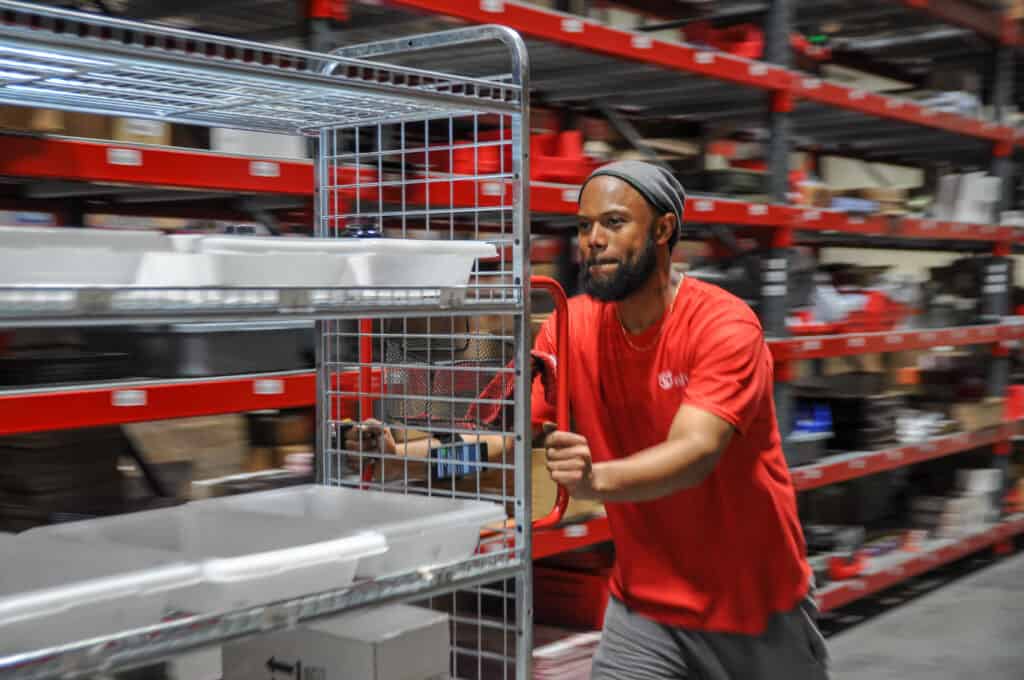
However, you might want to consider outsourcing your fulfillment to a 3PL services provider. Over time, your online retail store may grow into an important revenue stream for your business. Third-party logistics can greatly ease the burden on you and your staff. In addition, you get professionals to handle your inventory control, packing, shipping, and returns.
You don’t have to choose an eCommerce fulfillment company located near you. In fact, it might be better not to. It will probably take several days to ship orders from your store to customers across the country. The best fulfillment company for your business might be one that has warehouses positioned for fast national fulfillment.
Set up your eCommerce store
The next step is to populate your store. Here are a few principles to keep in mind.
- Choose which products to sell online. You don’t have to include everything from your brick-and-mortar shop when you take your retail store online. You might start with just your bestsellers. In addition, you might not want to include items that are hard to ship. Start small and experiment. Setting initial goals will help you decide which products are the best fit for ecommerce.
- Take great photos. It’s impossible to put too much stress on the importance of good photography. If you can afford it, use professional photographs. However, if you have a lot of products or they change frequently, professional photography can get pricey. Get a good camera and lights. Set up a small photography studio where you can take pictures of new products. Add new photos often to keep your site fresh.
- Write good descriptions. Since your online customers can’t touch your products, you’ll need to describe them carefully and completely. Include materials, dimensions, and color. Describe what makes each product special. This is your best chance to highlight the appeal of your products and make the sale.

Connect your inventory systems to your eCommerce store
There’s nothing worse than making an online sale and then realizing the item is out of stock. Take a complete inventory before you start selling online. Keep your inventory up to date so you know what you have to sell.
Now is the time to digitize your inventory. If you don’t already have an inventory app, look for one that works with your sales platform. It’s an investment you won’t regret.
Promote your online shop
Let your existing customers know that you now have a retail store online. They are likely to be your first and best customers. But don’t stop with your current clientele. Use social media to promote your shop. Online advertising can be an economical way to get people to visit your online store. Start a blog and write about your products. This will help with SEO (search engine optimization — the thing that will help your store come up in Google searches).
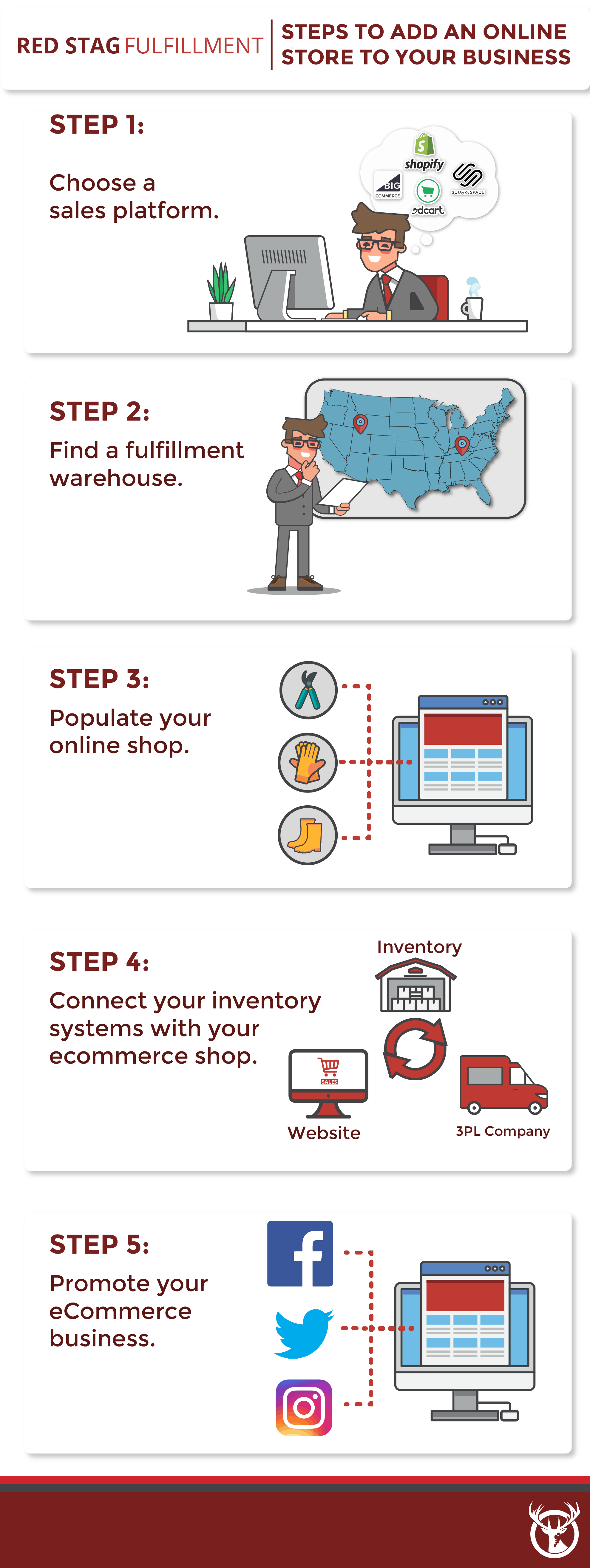
Technology requirements to integrate a brick-and-mortar store with an online store
As mentioned above, you’ll want an inventory system that integrates with your online retail shop. You’ll also want a secure checkout, so your customers feel safe making online purchases. Research will show you the best inventory and secure checkout apps for your eCommerce sales platform.
There are a host of apps designed to help you sell online. Apps can send an email when someone abandons a shopping cart and allow one-click purchases. You might want an app to streamline shipping or a chatbot to answer customer questions. There are many apps tailored to specific sales platforms.
You don’t have to purchase a lot of apps to get your store going. However, building a suite of apps that work together for online sales can make your eCommerce operation run more smoothly.
You don’t need to get all new technology when you create a retail store online. Leverage your existing systems for inventory, point of sale, and other retail functions as much as possible.
Tips for combining online and in-person sales
Here are some tips for combining your brick-and-mortar shop and your retail store online to make your sales go father.
Use the power of outsourced fulfillment to increase your reach
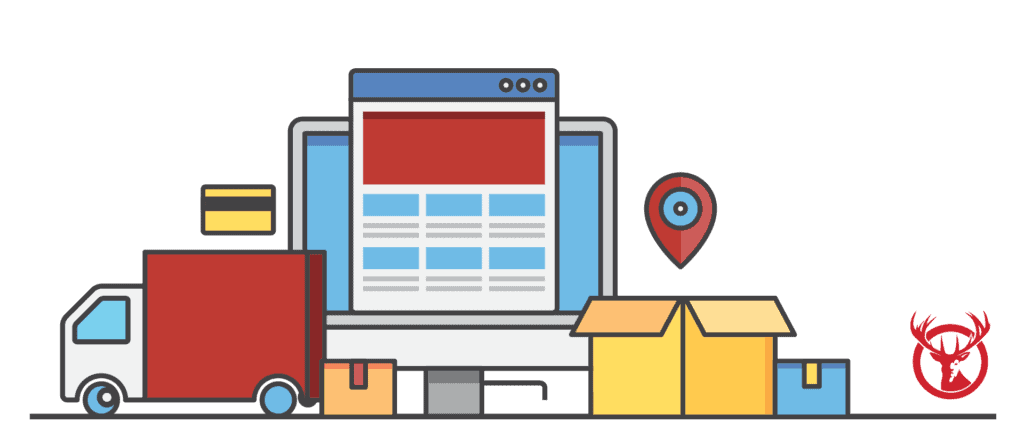
Outsourcing your fulfillment is like adding warehouse pros to your business without adding to your payroll. You can ship farther, faster.
Cross-sell from each platform to the other
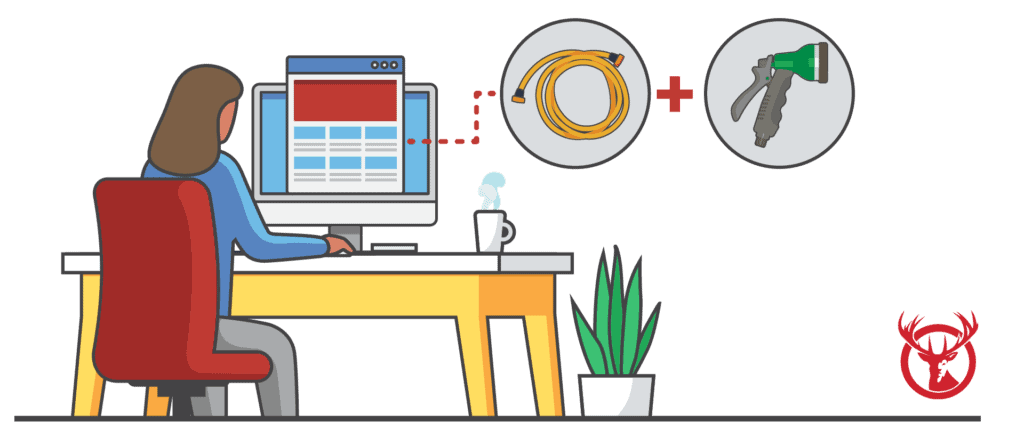
Invite your online customers to visit your brick-and-mortar store when they are in town. Hand out cards with discount codes for online shopping at your brick-and-mortar location.
Add customer service resources to support your eCommerce sales

Selling online is lovely when it goes smoothly. Your fulfillment warehouse ships orders and you watch revenue flow in. However, you need to be prepared for an additional cost of online retail sales: customer service. When customers can’t interact with you in the store, they may have questions. Expect to get more returns and deal with more customer service issues.
Advantages of the hybrid sales model
Taking your brick-and-mortar retail store online has a lot of advantages. People who buy online can return items in the store. You are open for sales 24/7, even on weekends and holidays. You can make sales without being tied to the shop. Your overhead on eCommerce sales will probably be lower than on in-person sales. You can expand and diversify your customer base. In fact, you can reach people who like your products from around the globe. Plus, your business will be more resilient. Having two very different ways to reach your customers is a smart way to make sure your business can continue to thrive.







